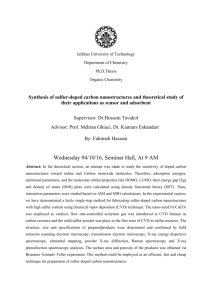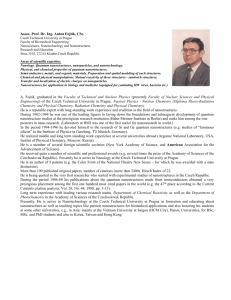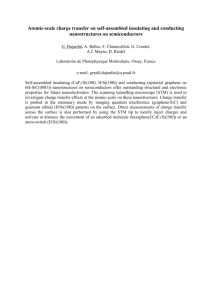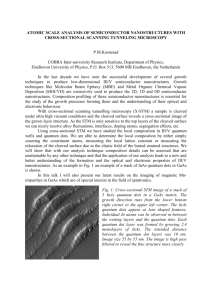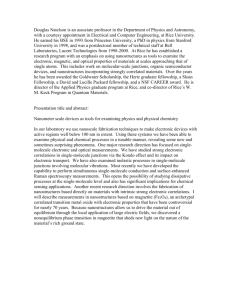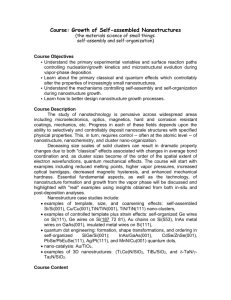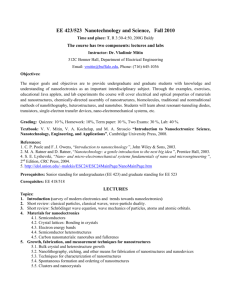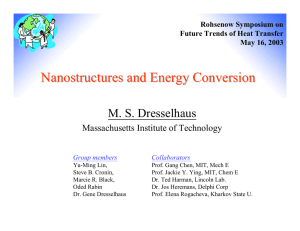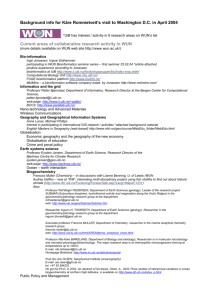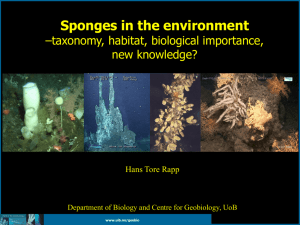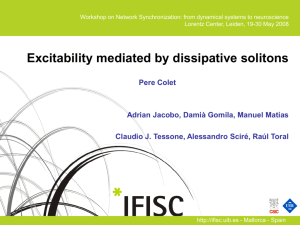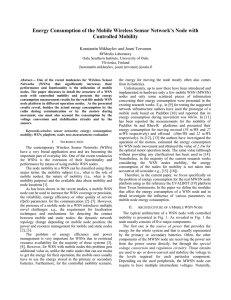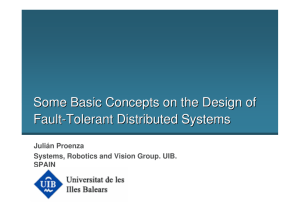Electronic Properties of Nanostructures
advertisement
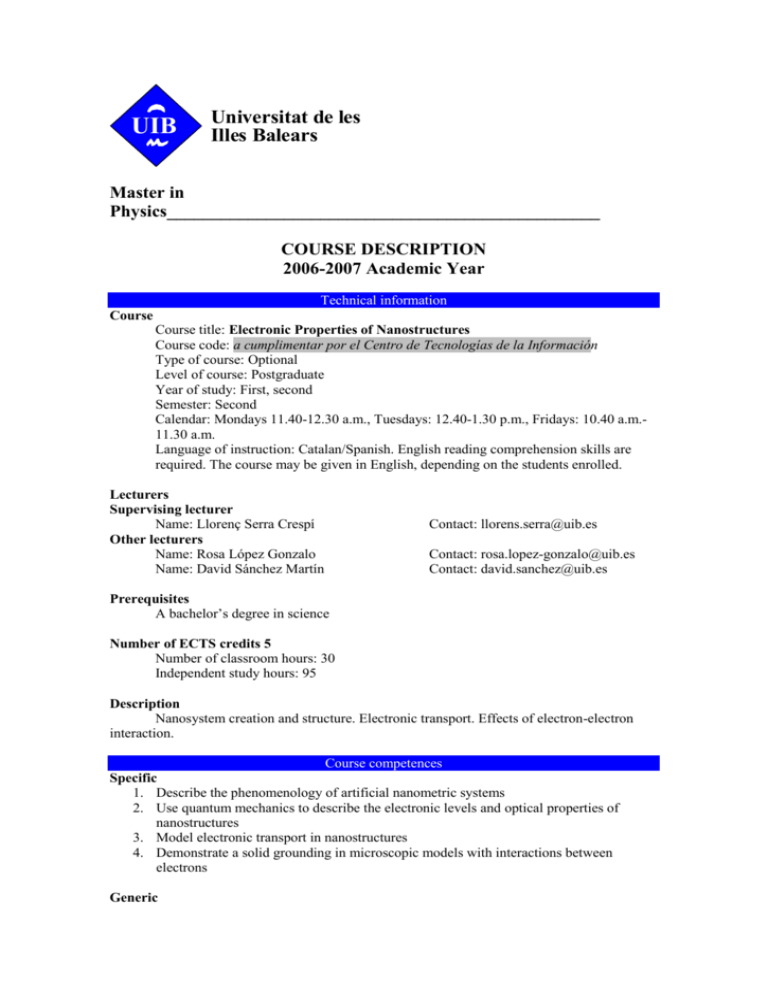
UIB Universitat de les Illes Balears Master in Physics________________________________________________ COURSE DESCRIPTION 2006-2007 Academic Year Technical information Course Course title: Electronic Properties of Nanostructures Course code: a cumplimentar por el Centro de Tecnologías de la Información Type of course: Optional Level of course: Postgraduate Year of study: First, second Semester: Second Calendar: Mondays 11.40-12.30 a.m., Tuesdays: 12.40-1.30 p.m., Fridays: 10.40 a.m.11.30 a.m. Language of instruction: Catalan/Spanish. English reading comprehension skills are required. The course may be given in English, depending on the students enrolled. Lecturers Supervising lecturer Name: Llorenç Serra Crespí Other lecturers Name: Rosa López Gonzalo Name: David Sánchez Martín Contact: llorens.serra@uib.es Contact: rosa.lopez-gonzalo@uib.es Contact: david.sanchez@uib.es Prerequisites A bachelor’s degree in science Number of ECTS credits 5 Number of classroom hours: 30 Independent study hours: 95 Description Nanosystem creation and structure. Electronic transport. Effects of electron-electron interaction. Course competences Specific 1. Describe the phenomenology of artificial nanometric systems 2. Use quantum mechanics to describe the electronic levels and optical properties of nanostructures 3. Model electronic transport in nanostructures 4. Demonstrate a solid grounding in microscopic models with interactions between electrons Generic 1. Understand and express meaning in the languages of physics, mathematics and programming 2. Apply theoretical and practical knowledge to problem solving 3. Apply computer technologies 4. Initiate individual research in the field 5. Be conversant with techniques for writing and publicly presenting individual and research work Course contents Two dimensional electron gas in semiconductor quantum wells. Formation of quantum points and wires. Carbon nanotubes. Quantum states and optical properties of nanostructures. Effects of external magnetic fields. Electronic transport in Landauer’s and Landauer-Buttiker’s formalisms. S matrix and Green’s function formalism. The tight-binding model. The resonant tunnelling effect in double barrier systems. Coherent transport and dispersive phenomena. Electron-electron interaction effects: Coulombian blockage of transport. Introduction to Green’s function and non-equilibrium formalism. Methodology and student workload Subject-related Teaching competences method 1-4 Classroom sessions 2,3 Practical classes 1-4 2,3 4 1-4 2,3 1, 2 3, 4 1, 2, 3, 4 Tutorial Presentation Group work Seminar Theoretical study Practical study Theoretical work Practical work Complementary activities Type of group Medium-sized groups Medium-sized groups Small Medium-sized groups Medium-sized groups Student hours 20 Teaching staff hours 20 5 5 2 1 2 1 2 2 45 25 10 10 5 Ten percent of course activities are distance learning classes (e-learning) Assessment instruments, criteria and learning agreement Assessment criteria 1. Acquisition and/or fulfilment of course-specific competences 2. Interest shown by students during the course Assessment instruments 1. Presentation of a project from the course content 2. On-going assessment based on participation in practical classes, presentation of group work, etc. Grading criteria 1. 50% of the grade: presentation of project 2. 50% of the grade: presentation of group work, problem solving in practical classes Assessment based on a learning agreement: No Independent study material and recommended reading Material available on the Internet and photocopies given out by lecturers Bibliography, resources and annexes 1.- S. Datta, Electronic transport in Mesoscopic systems, Cambridge U.P. 2.- D.K. Ferry, S. M. Goodnick, Transport in Nanostructures, Cambridge U.P. Link to the course teaching guide

